Don't wanna be here? Send us removal request.
Photo




Opening night at the CSIRO Discovery Centre! What a feeling, after months of planning and working, to have my two exhibitions In Their Eyes and Impressions of Home hanging side by side! Thank you so much to everyone who made this possible. Please contact me directly if you’d like copies of either accompanying artist statement :-).
UPDATE: Both exhibitions have been extended by a further three weeks!
PREVIOUS: INVITATION!
alecmorris.photo
0 notes
Photo


PREVIOUS: GUMALA PHOTO SERIES, 02 OF 02 | NEXT: OPENING NIGHT!
alecmorris.photo
0 notes
Photo
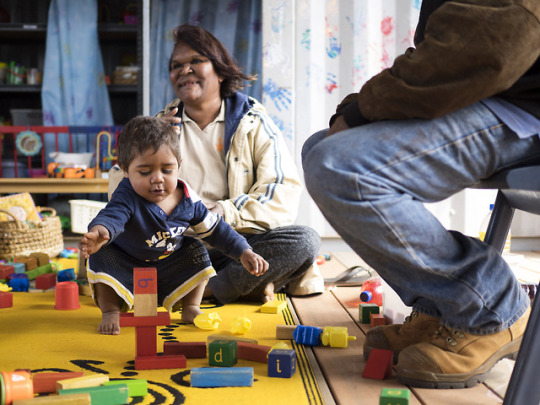
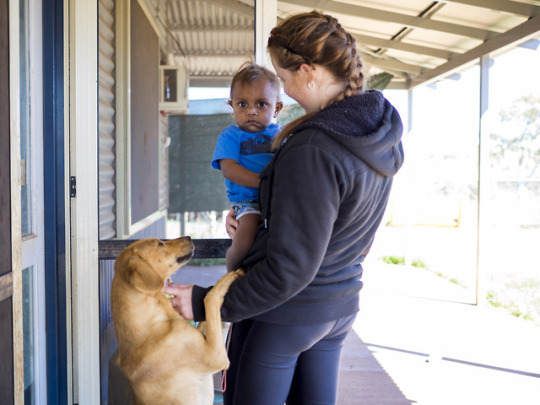
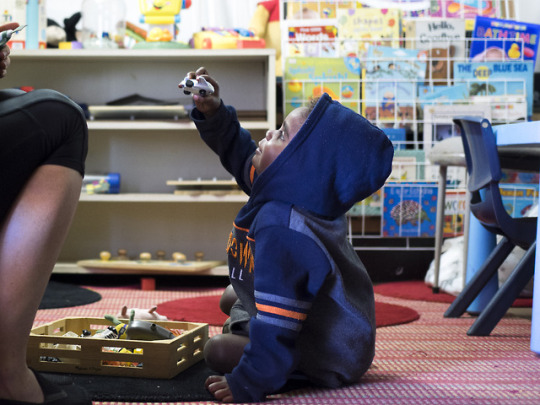
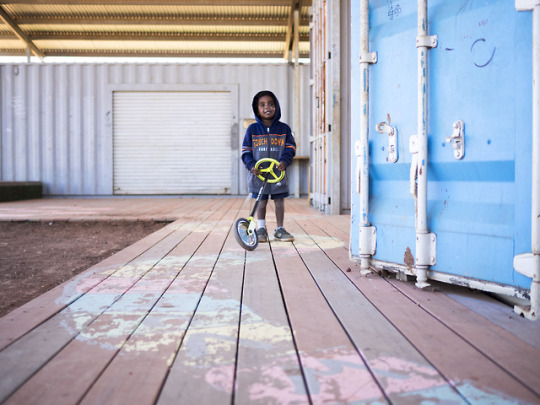
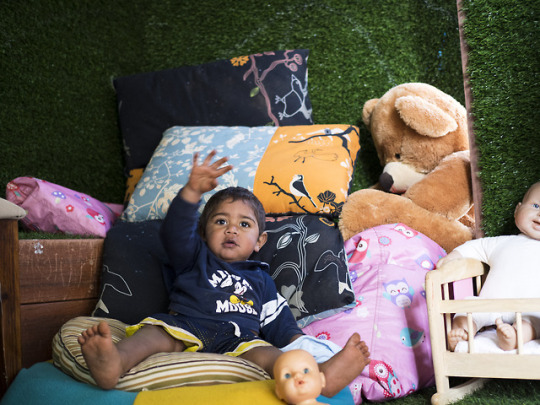
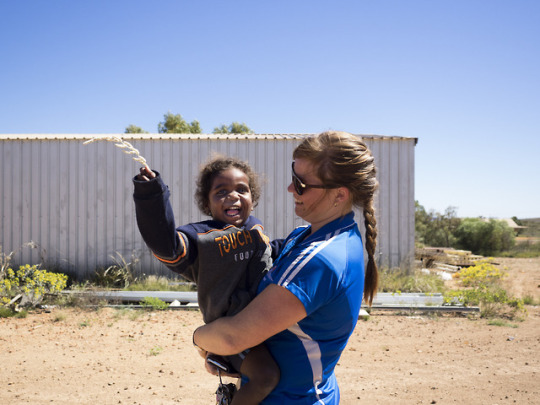
PREVIOUS: GUMALA PHOTO SERIES, 01 OF 02 | NEXT: INVITATION!
alecmorris.photo
#learning#schools#school#education#earlychildhoodeducation#gumala#wakathuni#pilbara#photography#photoportrait#portraiture#photo#photodocumentary
0 notes
Photo










PREVIOUS: PART 03 - GUMALA EARLY CHILDHOOD CENTRE | NEXT: GUMALA PHOTO SERIES, 02 OF 02
alecmorris.photo
#education#school#schools#learning#earlychildhoodeducation#gumala#wakathuni#pilbara#photography#photo#photodocumentary#documentary#portrait#portraiture
0 notes
Text
Part 03: Gumala Early Childhood Centre
As the landing gear rumbled out above Paraburdoo, the golden morning light trickling across red dirt and between undulating and intricate rock formations, I was kicking myself for having buried the camera in the overhead compartment. The landscape was breathtaking. But that sense of inspiration would be supplaced by what I’d discover on the ground over the days to come. The Gumala Aboriginal Corporation’s Early Childhood Centre in the Wakathuni Community, a partnership with The University of Melbourne and Tom Price Primary School, was the final destination of my trip.

According to last year’s Closing the Gap Report, between 2008 and 2014, the proportion of Aboriginal and Torres Strait Islander students at or above National Minimum Standards in reading and numeracy showed no statistically significant improvement (Australian Institute of Health and Welfare 2015). My personal regard for the testing aside, recent NAPLAN reporting showed that the reading and numeracy gap in every state bar Tasmania is so pronounced that the mean score for Indigenous students is close to or below the 20th percentile score for non-Indigenous students (National Assessment Program 2015). This gap only widens with increasing remoteness: by way of example, over that same 2008-2014 period 65% of Indigenous Year 7 students in very remote areas did not meet the national minimal standard for reading, compared to 15% in metropolitan areas (Department of Prime Minister and Cabinet 2015). Not that it’s reported like this: it sounds less dire when presented as 35% and 85% respectively meeting national standards. This is in fact a trend not unique to the Closing the Gap Report.
Amidst their 2015 findings, the AEDC reports that “the majority of Aboriginal and Torres Strait Islander children were not considered developmentally vulnerable” (Australian Early Development Census 2015). Which sounds promising. However this statement downplays the fact that 42.1 percent were found to be developmentally vulnerable (Department of Prime Minister and Cabinet 2015). Summaries of the report are quick to point out that 42.1% still represents a 5% improvement since 2009, but quite frankly I find it hard to trust any of these figures, or at least their accuracy in capturing the true state of Indigenous education. Skepticism is often muddied with cynicism, and misconceived as simple doubt or disbelief; for this reason, I’m often cautious in how I frame my tendency to question such statistical ‘trends’. But discovering that the touted successes of the Closing the Gap campaign are in fact due to a decline in literacy rates for non-Indigenous students (Robertson 2014) has reminded me that skepticism, or the application of reason and critical thinking, is not such a bad thing in a world where the truth is so determinedly obfuscated. Little or no progress has been made at the national level in closing gaps for reading and numeracy. And beyond this lies a far greater gamut of resultant social problems faced by our young Indigenous people. In the words of Peter Harris, chair of the Australian Government’s Productivity Commission, “meeting the targets for life expectancy, reading and numeracy and employment seems an unlikely prospect at this stage” (National Indigenous Television 2015).
This is a large and challenging problem to address as a nation, and our young Indigenous people can’t simply wait for policy makers to fix it. This is where programs like Gumala’s Early Childhood Centre fit in and, more specifically, the dedicated educators behind them. At Wakathuni, Gumala is trying not just to educate young Indigenous children, but to impart upon and develop in them a lifelong joy for learning. The teacher out there, Emily, has as much passion and belief in these children as they have a love for learning (it’s all over their faces, or in George’s case all over his face in between remnants of the chalk that he’s been eating). Despite the program’s intention to directly involve the parents in the learning process, deeply engrained cultural resistance has proved a significant hindrance. But Emily has worked hard to forge the relationships that are so critical to engaging the community and, after setting up her little sea container classrooms every morning, goes door- to-door to gather up the children and ask whether maybe the parents want to drop by that day. Emily, for departmental reasons that in concept elude me, will shortly be moved on from the centre.
I am an outsider to this world of education; just a photographer. All I’d like is to raise a bit of awareness and maybe generate some discussion for the sake of these children and these educators. All of the programs that I’ve visited so far have been paradoxically victim to the pursuit of funding that they all depend on to operate, and hamstrung by policies and practices that seem generally devoid of truly informed, on-the-ground insight. Yes, I think that the system is broken, but there are people out there who just want to help our young people, and I’m encouraged by the thought that they’ll continue to do so until, hopefully, the rest of the education system catches up.

Photo series to follow, in two parts.
PREVIOUS: GEOGRAPHE TRAINING / HORSE VISION PHOTO SERIES | NEXT: GUMALA PHOTO SERIES, 01 OF 02
alecmorris.photo
Australian Early Development Census 2015, ‘Findings from the AEDC’, accessed 3 September 2016, <http://www.aedc.gov.au/parents/findings-from-the-aedc>.
Australian Institute of Health and Welfare 2015, ‘Closing the gap in Indigenous education’, accessed 3 September 2016, <http://www.aihw.gov.au/WorkArea/DownloadAsset.aspx? id=60129552270>.
Department of Prime Minister and Cabinet 2015, ‘Closing the Gap: Prime Minister’s Report 2015’, accessed 3 September 2016, <https://www.dpmc.gov.au/sites/default/files/publications/Closing_the_Gap_2015_Report.pdf>.
National Assessment Program 2015, ‘National Report for 2015’, accessed 3 September 2016, < http://www.nap.edu.au/_resources/2015_NAPLAN_national_report.pdf>.
National Indigenous Television 2015, ‘Indigenous education gap stands out in latest NAPLAN results’, accessed 3 September 2016, < http://www.sbs.com.au/nitv/article/2015/12/02/indigenous-education-gap-stands-out-latest- naplan-results>.
Robertson, D. 2014, ‘Indigenous literacy rates on the decline: report’, accessed 3 September 2016, < http://www.9news.com.au/national/2014/05/23/17/54/indigenous-literacy-rates-on-the- decline-report#EpB5BI1orcpc5Acm.99>.
#learning#schools#school#education#earlychildhoodeducation#gumala#wakathuni#pilbara#photography#photoportrait#portraiture#photo#photodocumentary
0 notes
Photo








PREVIOUS: PART TWO - GEOGRAPHE TRAINING / HORSE VISION | NEXT: PART THREE - GUMALA EARLY CHILDHOOD CENTRE
alecmorris.photo
#learning#schools#school#education#busselton#horsevision#photography#photoportrait#portraiture#photo#photodocumentary
0 notes
Text
Part 02: Geographe Training / Horse Vision
Geographe Training is a Busselton High School off-site engagement program. Amongst the opportunities offered to students through Geographe Training is Horse Vision, an equine facilitated learning program that helps participants build self-awareness and communication skills, confidence, team work, and trust. The young people it assists have often become disengaged from school, family, or community in some manner, and may also be experiencing anxiety or depression.
This was an incredible program to witness. From under the shelter of my ‘modified’ rain poncho (see below; thank you Beth for sending me this in an email titled ‘Dalek at Horse Vision’) I watched bonds develop between the participants and the horses, and was fascinated by the way that they mirrored each other. The horses were receptive to the most imperceptible changes in the participants’ body language: as Chris the centre facilitator explained, when the students aren’t fully mindful of and decisive in their own actions, the horses behave with less focus and conviction themselves. They take cues off each other, and in this way the students come to learn the impact of their body language and behaviour directly and in their own time.
It was a fantastic few hours getting to know a great bunch of young people and program staff. The success of the program is testament to the determination and commitment of everyone involved. I’m looking forward to getting back down to Busselton and seeing what else they’re up to.


PHOTO CREDIT: BETHENIE MCDONALD
PREVIOUS: FAST TRACK PHOTO SERIES | NEXT: GEOGRAPHE TRAINING / HORSE VISION PHOTO SERIES
alecmorris.photo
#learning#schools#school#education#busselton#horsevision#photography#photoportrait#portraiture#photo#photodocumentary
0 notes
Photo








PREVIOUS: PART ONE – FREMANTLE FAST TRACK | NEXT: PART TWO - GEOGRAPHE TRAINING / HORSE VISION
alecmorris.photo
#learning#schools#school#education#fremantle#fremantlefasttrack#photography#photoportrait#portraiture#photo#photodocumentary
0 notes
Text
Part 01: Fremantle Fast Track
My mum, a teacher of 35+ years, would often recite or reference this poem when I was a kid. The words have stuck with me over the years, and I still feel the emotion in her voice as I read it now.
Kids Who Are Different
©Digby Wolfe, 1982
Here’s to the kids who are different, The kids who don’t always get As, The kids who have ears twice the size of their peers, And noses that go on for days...
Here’s to the kids who are different, The kids they call crazy or dumb, The kids who don’t fit, with the guts and the grit, Who dance to a different drum...
Here’s to the kids who are different, The kids with the mischievous streak, For when they have grown, as history’s shown, It’s their difference that makes them unique!
The students at Fremantle Fast Track are courageous and determined young people. They’re different, and all the stronger for it. They’ve been through a lot but, from such hardship and where others would falter, they’re taking the first steps towards reclaiming control. And with them is Fast Track.
Fast Track is an educational engagement program that has been successfully providing individualised pathway plans to students for over 23 years. Yet stepping inside it feels less like a school and more like a large family hanging out in airy heritage-listed building. The students are passionately unique individuals, brought together by educational purpose and nurtured by staff who truly believe in them. These teachers don’t just want their students to graduate, they want to help them. They want them to become emotionally- aware, empowered, skilled, employable, happy. On paper, the program is a means for students to continue or resume their secondary education, or prepare for work or training; in reality, Fast Track also teaches life skills, provides true pastoral care, and has these students’ backs.
It was a pleasure to photograph the program. Photo series to follow.
PREVIOUS: SETTING THE SCENE | NEXT: FAST TRACK PHOTO SERIES
alecmorris.photo
#learning#schools#school#education#fremantle#fremantlefasttrack#photography#photoportrait#portraiture#photo#photodocumentary
0 notes
Text
Setting the Scene
At the heart of sustainability, integral to overcoming every social inequality, is education. The struggle to access quality education is often considered an abstract and foreign concern, yet here in Australia a quarter of grade four students are not meeting international benchmarks (Thomson, Hillman, Wernert, Schmid, Buckley, Munene 2012), and 30% of all WA students fall into a category of educational risk (Office of the Auditor General Western Australia 2015).
This project saw me travel Western Australia from its chilly South-West to the dry red Pilbara, meeting those overlooked or forgotten by mainstream education, and exploring initiatives that seek to change this. What I found was a broken system; one that has, to some extent, lost sight of what it means to truly educate. But what I also found were good, passionate people doing their damnedest despite it all, fighting their own battles amidst the noisy and at times ignorant bureaucracy that sees so many of our young people unsupported and misunderstood.

George, pictured, took this photo in the last few moments of my visit to the Gumala early-learning program in the remote Wakathuni Community near Tom Price: the final stop on the trip. George’s face lit up as he frantically pointed between the remote display on my phone and the camera that he had triggered with it, planted on a chair across from us. It was a triumphant grin; a little moment of understanding. Indigenous children are more than twice as likely as non-Indigenous children to be assessed as developmentally vulnerable by their first year of schooling. This gap only continues to widen (Australian Institute of Health and Welfare 2015). At Wakathuni, against wary cultural resistance, Gumala lays the groundwork for lifelong-learners and sustainable community development. They hope that by the time this generation has children of their own, a new appreciation for learning will have emerged. This is the beginning of something big, but it’s a hard and lonely path ahead.
With this project I hope to raise awareness and generate discussion for more than just Gumala. These are the initiatives that we must support. These are the educators that we should be celebrating. Most importantly, these are the kids that we need to remember.
PREVIOUS: THE EDUCATION PROJECT | NEXT: PART ONE – FREMANTLE FAST TRACK
alecmorris.photo
Australian Institute of Health and Welfare 2015, ‘Economic participation, housing and community safety’, accessed 20 August 2016, <http://www.aihw.gov.au/WorkArea/DownloadAsset.aspx?id=60129551287>.
Office of the Auditor General Western Australia 2015, ‘Follow-On: Managing Student Attendance in Western Australian Public Schools’, accessed 20 August 2016, <http://www.parliament.wa.gov.au/publications/tabledpapers.nsf/displaypaper/3913218afaa8e78d68c9867048257ea60016ea89/%24file/3218.pdf>
Thomson, S., Hillman, K., Wernert, N., Schmid, M., Buckley, S., and Munene, A. 2012, ‘Monitoring Australian Year 4 student achievement internationally: TIMSS and PIRLS 2011’, Australian Council for Educational Research Ltd, Camberwell, accessed 20 August 2016, < https://www.acer.edu.au/files/TIMSS-PIRLS_Monitoring-Australian-Year-4-Student- Achievement.pdf>.
0 notes
Text
The Education Project

Greetings!
I’ve been a little quiet since launching the website and hitting social media, but it’s because I’ve been buried in planning! On Monday I set off on a busy and perhaps overly ambitious trip to my home state of WA, to photograph a number of incredible education programs. What started off as a photography project run by the Canberra Institute of Technology, organised in conjunction with the United Nations and the CSIRO, has grown into a cross-section of inspirational education initiatives across WA, and the people behind them.
My original brief was to cover off on one aspect of the United Nations Year of Living Sustainably, and given a deep interest in education (owed to my mum) I chose to focus on the goal of Quality Education. This is concerned with the provision of access to inclusive and lifelong learning, towards improving lives, strengthening communities, and supporting sustainable development. Each of the programs that I’ll be visiting addresses this in its own unique way. Read on for my itinerary!
Monday: I’ll be touching down in Perth with just enough time to stretch and go to bed. And I’ll probably be needing that sleep.
Tuesday: The day starts at Fremantle Fast Track, an inspirational engagement and pathways program in the heart of my old stomping ground. Fast Track provides specialised learning programs tailored to individual students, developing awareness, skills, and knowledge, and enabling life-long learning. I’ll be focusing on their art and photography initiatives, and community engagement. The successes of this program have inspired the whole trip.
Wednesday: After an early start to reach Busselton for breakfast, I’m off to Horse Vision, a remarkable program that uses bonds formed between participants and horses to build self-awareness and interpersonal skills. My afternoon will be spent at Geographe Training HQ, the overarching body responsible for helping young people access local efforts such as Horse Vision, engaging and providing pathways for at-risk students. A rural cousin to Fremantle Fast Track. Then it’s back to Perth.
Thursday: I’ll be flying way up north, first thing, to visit the Wakathuni Community near Tom Price. Here the Gumala Aboriginal Corporation runs an early childhood education project based on the unique Abecedarian Approach, a combination of games, conversational reading, and enriched caregiving that involves the parents in the learning process. The program focuses on fostering sustainable education as part of broader community development.
Friday: After a morning in the Wakathuni Community I fly back to Perth for some family hangs, books, coffee, and time out.
Saturday: I’m finishing my trip on a slightly different and very personal note, with a portrait project documenting the elderly Italian men, or ‘The Uncles’, in my family. These are the people who have taught me the idiosyncrasies of Italian family (down to my tendency of sitting in the sun with my back to the wall in a singlet with a coffee), introduced me to espresso and grappa, and have embodied my heritage for as long as I can remember.
Sunday: No doubt weary and still a little dusty, it’s back to Canberra for me, where I foresee a near-future consumed by dimmed lights and photo management.
So that’s the plan! I’m really excited to see what comes of this, although a little nervous about doing justice to all these fantastic people and projects. Watch this space over the next few weeks (there’ll be more photos in future, promise) ☺.
Alec.
NEXT: SETTING THE SCENE
alecmorris.photo
#learning#schools#school#education#un#csiro#photography#photoportrait#portraiture#photo#photodocumentary
1 note
·
View note